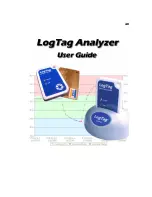
End-to-End Fragmentation and Reassembly
The fragmentation and reassembly feature reduces excessive delays of Frame Relay
packets by breaking them up into smaller fragments and interleaving them with
real-time frames. By doing this, real-time and non-real-time data frames can be
carried together on lower-speed links without causing excessive delays to the real-time
traffic. On receiving the smaller fragments by the peer interface, the fragments are
reassembled into their original packet. For example, short delay-sensitive packets,
such as packetized voice, can race ahead of larger delay-insensitive packets, such as
common data packets.
E Series routers support end-to-end fragmentation according to the FRF.12
Implementation Agreement standard. Unlike UNI and NNI fragmentation, end-to-end
supports fragmentation only at the endpoints. End-to-end fragmentation and
reassembly are supported only on non-multilink Frame Relay interfaces on
cOC12/STM4 and CT3 12 FO modules.
You configure end-to-end fragmentation at the Frame Relay subinterface level.
Fragmentation is applied to all PVCs associated with the subinterface. In most cases,
fragmentation and reassembly are used together. Fragmentation and reassembly,
however, can be configured separately for each map class.
For additional information, see Frame Relay Forum—Frame Relay Fragmentation
Implementation Agreement, FRF.12 (December 1997).
Frame Fragmentation
When you enable fragmentation, you can specify a maximum payload size of the
resulting fragments. If the maximum payload size is not specified, the default value
of 52 bytes is used. When enabled, fragmentation begins when the portion of the
packet that has not been transmitted in previous fragments exceeds the configured
maximum payload size. The fragmentation process continues until the entire packet
has been transmitted. Frames that do not exceed the configured maximum payload
size are not fragmented.
If you disable fragmentation, all packets transmitted by the Frame Relay subinterface
are transmitted intact.
Frame Reassembly
When reassembly is disabled and a data frame is received, a few scenarios may
occur:
■
If the frame is not a fragment, it is forwarded normally.
■
If the frame is a fragment and the upper interface is IP (that is, the interface
above the Frame Relay subinterface), then the fragment is immediately discarded.
If you enable reassembly, then received fragments undergo the reassembly process.
Packets that are not fragments are forwarded as normal.
End-to-End Fragmentation and Reassembly
■
119
Chapter 2: Configuring Frame Relay
Содержание JUNOSE 11.1.X - LINK LAYER CONFIGURATION 4-7-2010
Страница 6: ...vi...
Страница 8: ...viii JUNOSe 11 1 x Link Layer Configuration Guide...
Страница 26: ...xxvi List of Figures JUNOSe 11 1 x Link Layer Configuration Guide...
Страница 34: ...2 Chapters JUNOSe 11 1 x Link Layer Configuration Guide...
Страница 200: ...168 Monitoring Upper Level Protocols over Ethernet JUNOSe 11 1 x Link Layer Configuration Guide...
Страница 230: ...198 Monitoring VLAN and S VLAN Subinterfaces JUNOSe 11 1 x Link Layer Configuration Guide...
Страница 258: ...226 Monitoring 802 3ad Link Aggregation JUNOSe 11 1 x Link Layer Configuration Guide...
Страница 334: ...302 Troubleshooting JUNOSe 11 1 x Link Layer Configuration Guide...
Страница 394: ...362 Monitoring Multiclass MLPPP JUNOSe 11 1 x Link Layer Configuration Guide...
Страница 406: ...374 Monitoring POS JUNOSe 11 1 x Link Layer Configuration Guide...
Страница 468: ...436 Troubleshooting JUNOSe 11 1 x Link Layer Configuration Guide...
Страница 498: ...466 Monitoring Bridged Ethernet JUNOSe 11 1 x Link Layer Configuration Guide...
Страница 546: ...514 Monitoring Cisco HDLC JUNOSe 11 1 x Link Layer Configuration Guide...
Страница 747: ...Part 2 Index Index on page 717 Index 715...
Страница 748: ...716 Index JUNOSe 11 1 x Link Layer Configuration Guide...
Страница 774: ...742 Index JUNOSe 11 1 x Link Layer Configuration Guide...















































